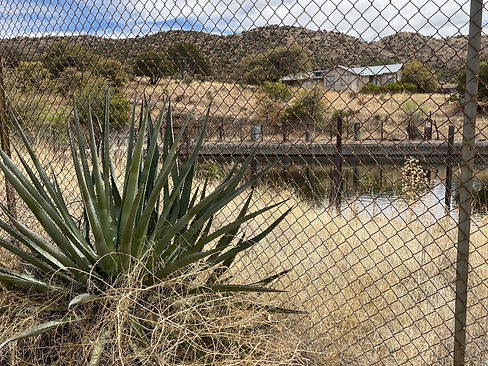Tapped
A podcast that tells the stories of people living with the cost of drought in Southern Arizona, and what we can do to mitigate it
Water is a finite resource in the American Southwest, though it hasn’t always been viewed as such. As states in the Colorado River Basin cut deals and their own water supplies, agriculture, housing, fire suppression and other industries are figuring out how to coexist with the desert and its drying climate.

Wildfire seasons are growing longer and doing more damage in the American West. The City of Bisbee’s water system for fighting fires is so antiquated that it’s slowing the fire department down and causing more destruction. Town leaders are working to get money for a new system that wouldn’t just prepare Bisbee to fight major fires, but also bring its water infrastructure on the whole up to speed.
The Tohono O’Odham Nation and its predecessors, the Huhugam, have used canals to move water around Southern Arizona for millennia. As settlers arrived, they dug deep and changed the face of water management in the area, drying up rivers and tightening resources. Now, the Tohono O’Odham Nation is looking into older practices around water and bringing some back into the fold.


For a place with a desert climate, Southern Arizona can be surprisingly green. The state plays a big role in providing Americans with fresh greens year-round, and its farmers are feeling the pressure to keep that going while cutting down on water. It’s also not an easy place to start farming from scratch.
Poor water practices made the Santa Cruz River practically disappear, but new efforts have some water flowing again. And when there’s water in the desert, life follows quickly. Animals and plants that used to rely on the river are returning, sometimes with the help of scientists.


Tucson has a very particular look to it, and that doesn’t include the All-American grass lawn. This is the story of how Tucson convinced people to trade in their grass for cacti, and how well it’s reaching people in every corner of the city with that goal today.
Many communities along the U.S.-Mexico border share aquifers, and that works better for some states and cities than others. In this collaboration with the Texas Water Resources Institute, we compare how those relationships work in Texas and Arizona.


Arizona’s economy runs on growth. But as the state is forced to make cuts in its water usage, it will have to reconsider what the housing developments built to accommodate that growth look like and even how many more people it can realistically handle.